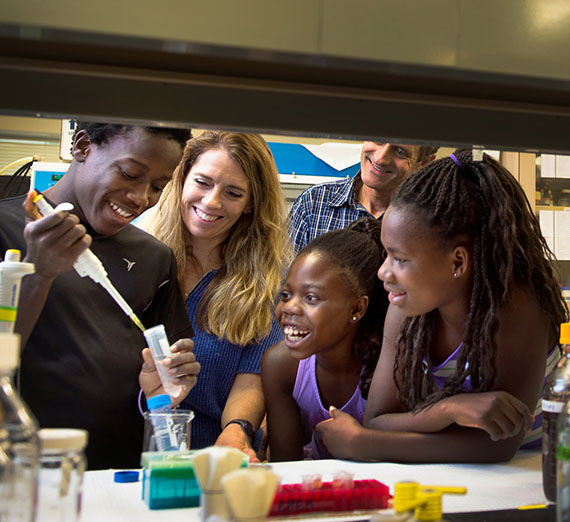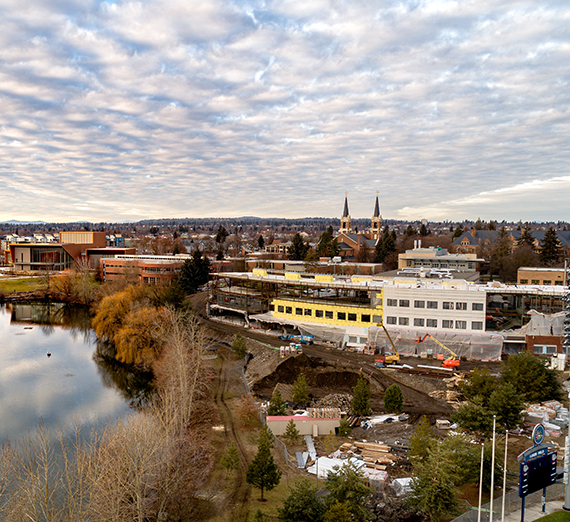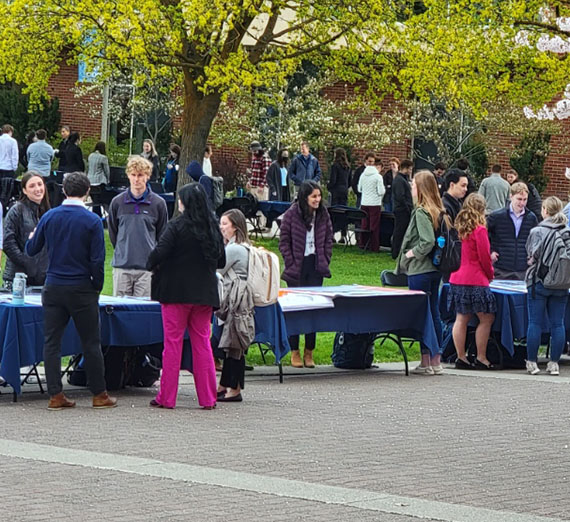Up Close: Engineering & Applied Science Dean Karlene Hoo
'Imagine the Possibilities'

The facility heralds a new era of expansion in STEM-related educational and interdisciplinary collaboration, enabling faculty and students to engage in important theoretical and applied work in a new learning environment. The University marked the beginning of construction at a Sept. 26 ceremonial groundbreaking event.
“There’s a need for more high-quality space and more modern tools for the students to learn but also for the faculty to do research and engage all the students in research. The priority is space, modernization of spaces, contemporary tools, all so that we can be successful,” she said.
Dean Hoo came to Gonzaga from Montana State University, where she was a professor of chemical engineering and dean of the Graduate School for five years. Prior to that, she served as professor and associate vice president for research at Texas Tech University.
In an interview, Dean Hoo said future opportunities are proliferating for graduates of the school.
“The ‘E’ in STEM is engineering. I think the graduates of the School of Engineering and Applied Science, the graduates of any STEM (science, technology, engineering and math) field, have multiple opportunities in the workforce — locally, nationally and internationally. I see the rise in the need for a technologically educated workforce continuing to grow — especially if we’re going to meet the larger global challenges out there. The thing we need to do here is not just to educate the students to get that first job,” she said, “but to become leaders in those environments. We at Gonzaga strive to create the leaders who take on today’s and tomorrow’s challenges, and that’s what we intend to do.”
The first female dean of the school, Dean Hoo is one of the first women to earn a doctorate from the department of chemical engineering at the University of Notre Dame. She hopes to inspire others to pursue their dreams — particularly women in engineering.
One of four women who assumed top academic leadership roles at Gonzaga this fall, Dean Hoo understands the powerful impact of role models — particularly in engineering, a field in which women remain woefully underrepresented at 13% of the nation’s engineering workforce, according to statistics from the Society of Women Engineers (2018).
“In engineering and computer science, to have a female in a leadership role changes everything and hopefully for the better,” Dean Hoo said. “One of our mottos is ‘imagine the possibilities.’ Students, parents, they all need to see role models that inspire them to think that they, too, can imagine themselves accomplishing the impossible. Not necessarily follow my path or my other colleagues’ paths; but we remove those barriers, those glass ceilings, and say, ‘be more’; and it fits the Gonzaga mold. I’m excited to be one of the female deans here and I think that our partnership together will hopefully, change the landscape so we will have a defining moment in history.”
Asked how the professional world has changed for engineering graduates in the past decade, she cites a movement “away from large, clumsy structures to very small structures.” Nanotechnology involves structures usually 1-100 nanometers; a nanometer is a billionth of a meter.
“We talk about nano-level sensors that are able to measure at the atomic level. That kind of technological breakthrough has a powerful influence on engineers’ approach to how things are going to be used,” Dean Hoo said, noting a shift also from single to multidisciplinary perspectives.
That shift is the rationale for the new Integrated Sciences and Engineering facility: to foster interdisciplinary research and practice.
“We talk about multidisciplinary teams now. Often times, we’re siloed in our thinking, ‘Am I an electrical engineer, am I a computer scientist?’ Today’s era requires multidisciplinary perspectives on the different issues that we’re facing. I think the way we treat engineers now is not just ‘business as usual’ in the classroom. High-impact practices and experiences are important.
“With opportunities in undergraduate research, study abroad, living and learning communities, we help the students see that there are many worldviews to take into account when considering a solution,” she continued. “We also have to think about sustaining what we do; before, we didn’t spend a lot of time thinking about risks or constraints. Today we’re very cognizant of the space we live in, the constraints we have to address, and the finiteness of resources.”
The exponential advance of technology requires an especially prescient approach to STEM education, along with helping students understand and appreciate the imperative that they become lifelong learners, she said.
“What are considered today’s tools may be considered obsolete tomorrow. So, just how we educate the students to continuously want to learn is now part of the practice we have to employ and the very fabric of what we do,” Dean Hoo said, adding that the University’s core curriculum, which requires courses in the liberal arts, and demanding accreditation standards combine to provide graduates with the skills to flourish as professionals in their field and articulate members of society at large.
“While our goal is to educate students in the discipline, we never forget that broadening their experience is just as important in serving the whole student,” she said. “It’s not just for a career tomorrow, we’re educating them for a career for their lifetime.”
- Academics
- School of Engineering & Applied Sciences
- Academic Vice President
- Engineering Management
- Civil Engineering
- Electrical Engineering
- Mechanical Engineering
- News Center




